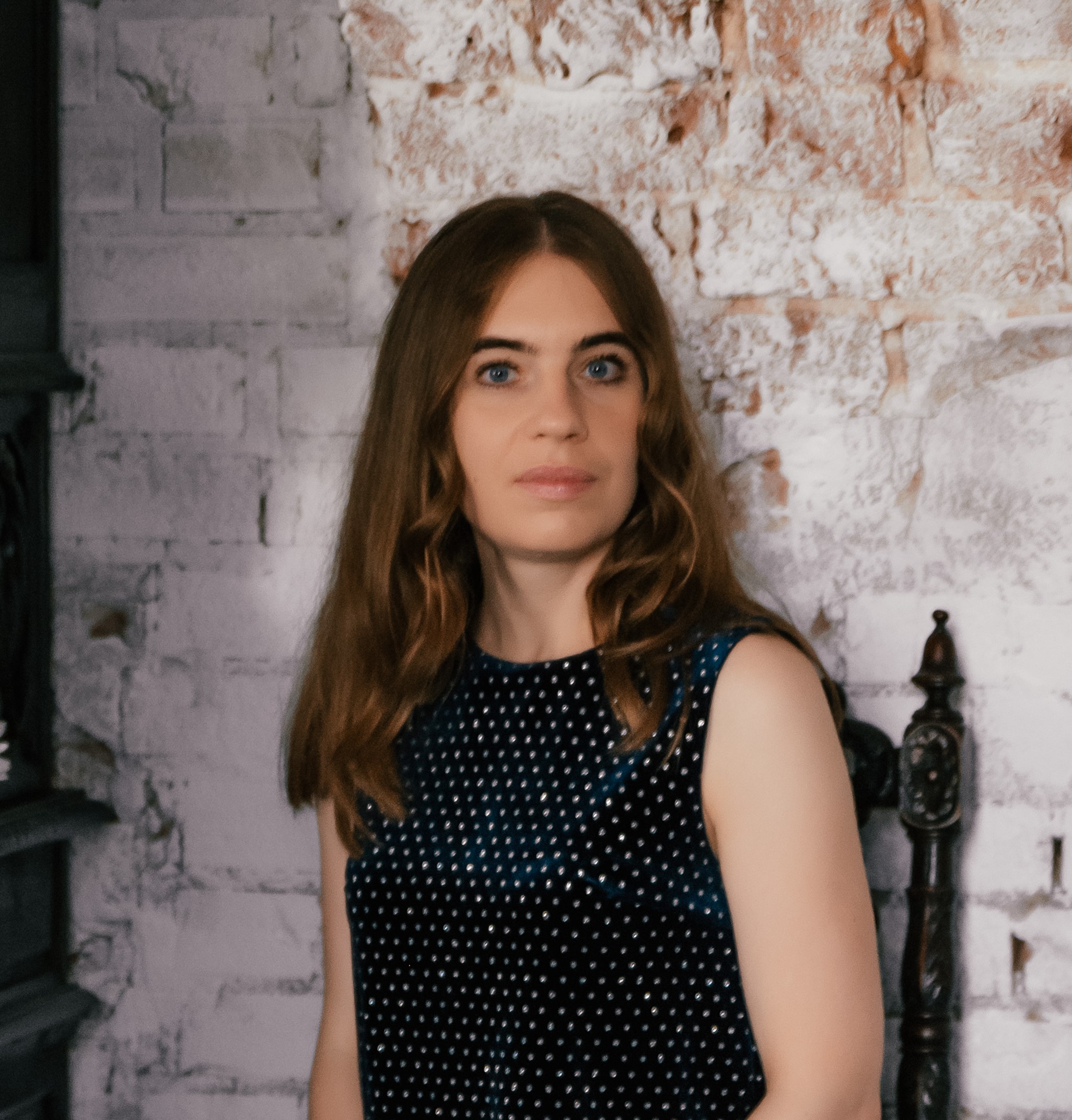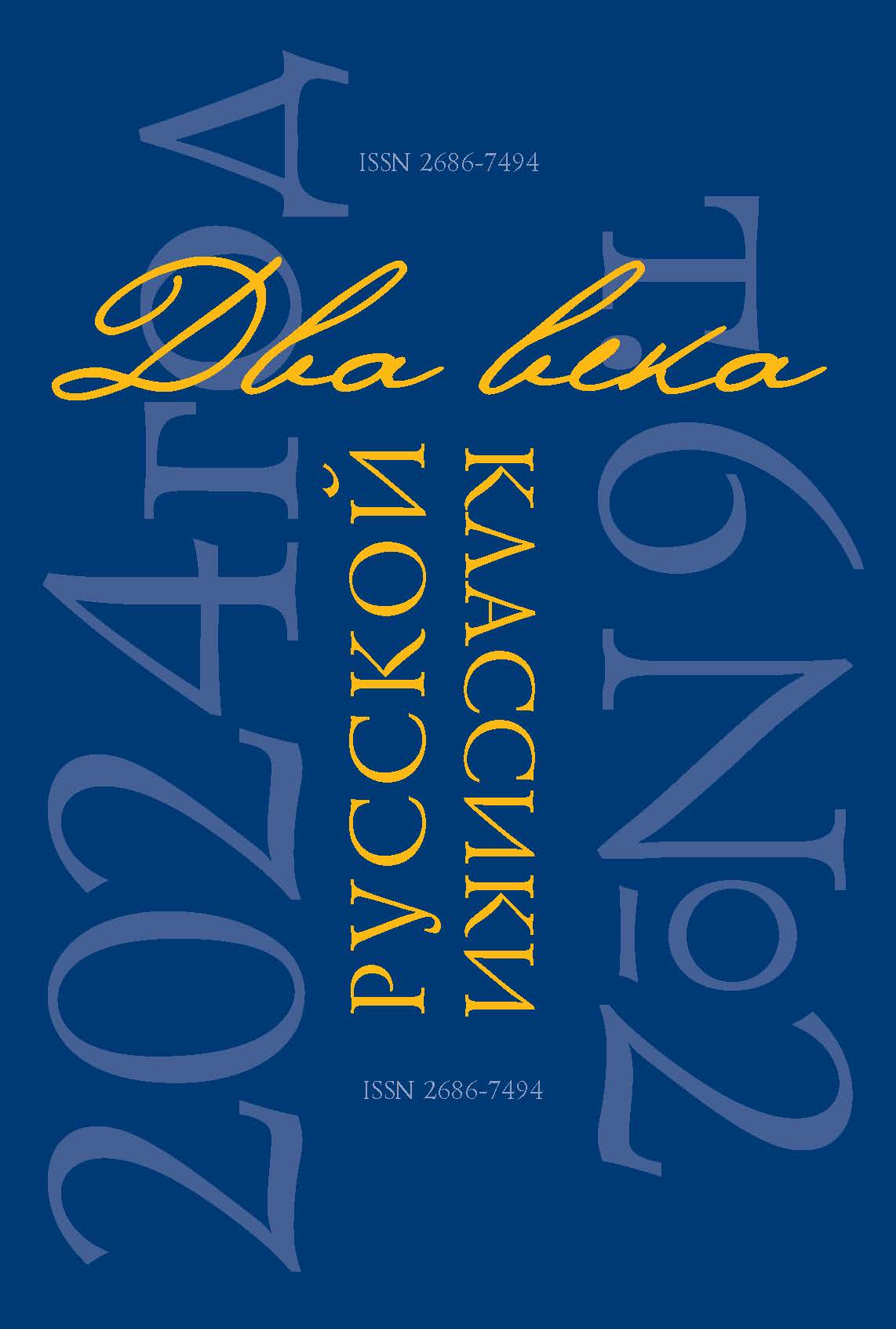“
DSc in Philology, Leading Research Fellow, A. M. Gorky institute of World Literature of the Russian Academy of Sciences, Moscow, Russia
ORCID ID: https://orcid.org/0000-0002-4558-3153
E-mail: This email address is being protected from spambots. You need JavaScript enabled to view it.
PhD thesis:
“The endless labyrinth of linkages” in the novel “Anna Karenina” by Leo Tolstoy (2012)
DSc thesis:
National identity of the Russian novel in the second half of the 19th century (2017)
Education and training, internships:
Graduated from Nekrasov Kostroma State University with a degree in Philology. Lecturer" in 2009; in 2012, full-time postgraduate course at Nekrasov KSU; in 2017, Master's programme at Kostroma State University, specialising as Lawyer in the judiciary and law enforcement.
Scientific and organisational activities:
Deputy editor-in-chief of the journal “Vestnik of Kostroma State University”.
Member of the editorial board and executive secretary of Gorky IWL RAS scientific journal “Two Centuries of the Russian Classics”.
Member of the Dissertation Council Д. 002.209.02 on specialities “Russian literature”, “Theory of literature, textology” of the IWL RAS.
Selected scientific publications:
Monographs
- On national identity of the Russian novel in the second half of the 19th century. Kostroma, Kostroma State University Publ., 2016. 492 p. (In Russ.)
- “The endless labyrinth of linkages” in the novel “Anna Karenina” by Leo Tolstoy. Kostroma, Avant Title publishing house Publ., 2012. 296 p. (In Russ.)
Web of Science / Scopus publications
- “Special Philological Issue of the Journal for A. N. Ostrovskiy’s Anniversary.” Dva veka russkoi klassiki, vol. 5, no. 4, 2023, pp. 154–167. (In Russ.) https://doi.org/10.22455/2686-7494-2023-5-4-154-167
- “The Image of Emperor Alexander I in the Epic Novel by L.N. Tolstoy ʽWar and Peace’.” Studia Litterarum, vol. 7, no. 1, 2022, pp. 260–281. https://doi.org/10.22455/2500-4247-2022-7-1-260-281 (In Russ.)
- The image of the land and its functions in Tolstoy’s novel Resurrection. Studia Litterarum, vol. 5, no. 3, 2020, pp. 236–251. DOI https://doi.org/10.22455/2500-4247-2020-5-3-236-251 (In Russ.)
- The phenomenon of the Russian epic novel. Philological Sciences. Scientific Essays of Higher Education, no. 6, 2020, pp. 110–117. DOI https://doi.org/10.20339/PhS.6-20.110 (In Russ.)
- Epic features in novels “War and Peace”, “Anna Karenina”, “Resurrection” by Leo Tolstoy. Matica Srpska Journal for Slavic Studies, book 98, 2020, pp. 21–30. DOI https://doi.org/10.18485/ms_zmss.2020.98.2 (In English)
- The problem of power in the Leo Tolstoy's novel “Resurrection”. The New Philological Bulletin, no. 4(55), 2020, pp. 96–112. DOI https://doi.org/10.24411/2072-9316-2020-00097 (In Russ.)
- Novels by Anthony Trollope and Anna Karenina by Leo Tolstoy: genetic and typological similarities. Imagology and Comparative Studies, no. 14, 2020, pp. 62–89. DOI https://doi.org/10.17223/24099554/14/3 (In Russ.)
- Image of the estate and home ground in stories and novels by A. I. Ertel. The New Philological Bulletin, no. 1 (52), 2020, pp. 107–119. DOI https://doi.org/10.24411/2072-9316-2020-00009 (In Russ.)
- Problem of a ratio of the points of view in the novel “Foma Gordeyev” by Maxim Gorky. Philological Class, no. 1, 2019, pp. 130–135. DOI https://doi.org/10.26170/fk19-01-19 (In Russ.)
Articles
- “Modern Russian studies. The Stages of the Hero's Maturation and the Manor Topos in M.M. Prishvin's Novel ‘Kashcheev Chain’ (Creative Development of L.N. Tolstoy's Legacy).” Russkaia slovesnost', no. 6, 2023, pp. 62–71. (In Russ.)
- “Correspondence of L. N. Tolstoy and Yu. F. Samarin: New Contexts and Problems of Relations Between Two Contemporaries.”Vestnik NSU. Series: History and Philology, vol. 22, no. 9: Philology, 2023, pp. 83–97. (In Russ.) (Co-authored with Kalyuzhnaya L. V.)
- “Interactions in Fates and a Dialogue between Leo Tolstoy and Leo Kavelin (Archimandrite Leonid).” Literary Process in Russia of the 18th–19th Centuries. Secular and Spiritual Literature, issue 3, ex. ed. Marina I. Shcherbakova, Valeria G. Andreeva. Moscow, IWL RAS Publ., 2022, pp. 646–671. https://doi.org/10.22455/Lit.pr.2022-3-646-671 (In Russ.)
- “The Idea of Continuity in the Novels of I.S.Turgenev.” Proceedings of Southern Federal University. Philology, vol. 26, no. 4, 2022, pp.102–118. DOI: 10.18522/1995-0640-2022-4-102-118 (In Russ.)
- “Explications of the Estate and Dacha topos in Leo Tolstoy's A Calendar of Wisdom.” Verhnevolzhski philological bulletin, no. 3, 2022, pp. 17–27. http://dx.doi.org/10.20323/2499-9679-2022-3-30-17-27 (In Russ.)
- N. N. Strakhov on the epic basis of Leo Tolstoy's Works. Verhnevolzhski philological bulletin, no. 1(24), 2021, pp. 18–25. DOI https://doi.org/10.20323/2499-9679-2021-1-24-18-25 (In Russ.)
- The images of priests in the epic poems “Who Is Happy in Russia?” by Nikolay Nekrasov and “The Land of the Fathers” by Sergey Gusev-Orenburgsky. Vestnik of Kostroma State University, vol. 27, no. 2, 2021, pp. 104–109. DOI https://doi.org/10.34216/1998-0817-2021-27-2-104-109 (In Russ.)
- The image of the epic heroine in the novel “Resurrection” by Leo Tolstoy. Philology and Culture, no. 2(64), 2021, pp. 68–75. DOI https://doi.org/10.26907/2074-0239-2021-64-2-68-75 (In Russ.)
- Heroines of Leo Tolstoy’s Novels and the “Stupefying Character” of Secular Existence. Two centuries of the Russian classics, vol. 3, no. 1, 2021, pp. 160–209. DOI https://doi.org/10.22455/2686-7494-2021-3-1-160-209 (In Russ.)
- The faces of the Russian estate in the novel by L. N. Tolstoy “Resurrection”. Russian literature, no. 6, 2020, pp. 19–25. (In Russ.)
- Folk theme as an epic basis of Ivan Turgenev's novel “Virgin Soil”. Proceedings of Southern Federal University. Philology, no. 4, 2020, pp. 169–181. DOI https://doi.org/10.18522/1995-0640-2020-4-169-181 (In Russ.)
- The features of the embodiment of the family theme in the novel by L. N. Tolstoy “Resurrection”. Verhnevolzhski philological bulletin, no. 3(22), 2020, pp. 43–52. DOI https://doi.org/10.20323/2499-9679-2020-3-22-42-51 (In Russ.)
- “Excited Snails”. Radicalism and apoliticalism in the novel “Smoke” by Ivan Turgenev. Two centuries of the Russian classics, vol. 2, № 4, 2020, pp. 228–249. DOI https://doi.org/10.22455/2686-7494-2020-2-4-228-249 (In Russ.)
- The image of the earth as one of the epic foundations of the artistic worlds of Leo Tolstoy’s novels. Two centuries of the Russian classics, vol. 2, № 2, 2020, pp. 192–227. DOI https://doi.org/10.22455/2686-7494-2020-2-2-192-227 (In Russ.)
- Leo Tolstoy’s work on the images of characters of the short story “Master and Man”. Two centuries of the Russian classics, vol. 2, № 1, 2020, pp. 224–243. DOI https://doi.org/10.22455/2686-7494-2019-2-1-224-243 (In Russ.)
- Folkish world in Alexander Ertel's novel “The Gardenins, Their Menials, Devotees and Foes”. In Spiritual and moral foundations of Russian literature. Collection of scientific articles. Kostroma, KSU Publ., 2020. pp. 71–74. (In Russ.)
- The dialogue between Leo Tolstoy and Nikolai Fyodorov and its reflection in the novel Resurrection. In The spiritual heritage of Leo Tolstoy in the context of world literature and culture: Proceedings of the XXXVII International Tolstoyan Readings. Tula, Tolstoy Tula State Pedagogical University Publ., 2020, pp. 223–232. (In Russ.)
- Divergences in views of Bishop Kirill, the third Head of the Russian Ecclesiastical Mission, and Vladimir Dorgobuzhinov, the Russian Consul in Jerusalem. In Karamzin Readings: Proceedings of the Conference of the Russian State Historical Archive. Issue 3. Saint Petersburg, “Hyperion” Publ., 2020, pp. 6–14. (In Russ.)
- The Italian text in early prose by Aleksandr Ertel (“Volkhonskaya Young Lady” and “Notes of Stepnyak”). In Russian Literature in the Russian-Italian Dialogue of the 21st Century: Text Criticism, Poetics, Translations, eds. M. I. Shcherbakova, G. Ghini. Moscow, IWL RAS Publ., 2020, pp. 260–271. (In Russ.)
- Pushkin's ideas and images at the heart of the novel “Anna Karenina” by Leo Tolstoy. In To Valentin Semyonovich Nepomnyashchiy, eds M. I. Shcherbakova, V. M. Yesipov. Moscow, IWL RAS Publ., 2020, pp. 275–283. (In Russ.)
- Short stories for children by Leo Tolstoy. In Magic light of children's literature, eds. Lenka Rozboudová, Ye. A. Vasil’yeva etc. Praha, 2019, pp. 303–316. (In Russ.)
- Personal interests of heroes and the motif of expectation in Leo Tolstoy’s epic novel War and Peace. Proceedings of Petrozavodsk State University, no. 1, 2019, pp. 8–12. (In Russ.)
- About three novels of A. F. Pisemsky. Russian literature, no. 1, 2019, pp. 44–58. (In Russ.)
- Motif of struggle in the chronicles “The Cathedral Clergy” by Nikolai Leskov. Vestnik of Kostroma State University, no. 3, 2019, pp. 89–93. DOI https://doi.org/10.34216/1998-0817-2019-25-3-89-93 (In Russ.)
- Christian imagery and motifs in the prose by Alexander Ertel. The literary process in Russia of the 18th –– 19th centuries. In Secular and spiritual literature. To the 500th Anniversary of Moscow Novodevichy Convent, eds M. I. Shcherbakova, O. A. Krasheninnikova. Moscow, IWL RAS, 2019, pp. 616–653. (In Russ.)
- The person and problem of anthropocentrism in the Russian novel of the second half of the 19th century. Verhnevolzhski philological bulletin, no. 4, 2018, pp. 13–21. (In Russ.)
- Tikhon Vyalov’s image in the novel “The Artamonov Business” by Maxim Gorky. Proceedings of South-West State University. Series Linguistics and Pedagogical, vol. 8, no. 2(27), 2018, pp. 6–13. (In Russ.)
- The significance of hagiographic literature in the character depiction of the Russian novel of the second half of the 19th century. In Secular and spiritual literature in 18th –– 19thcentury Russia, eds. M. I. Shcherbakova. Moscow, IWL RAS Publ., 2018, pp. 43–60. (In Russ.)
- Thoughts of Christ’s thousand-year kingdom in “The Genesis by Mine” of the Bishop Porfiry (Uspensky). Yaroslavl Pedagogical Bulletin, no. 6, 2017, pp. 304–308. (In Russ.)
- Artistic rhymes: a lyrical masterpiece by Afanasy Fet and an episode of the novel “Anna Karenina” by Leo Tolstoy. In Topical issues in the study of secular and spiritual literature. Moscow, publishing house at the Gate of St Nicetas Publ., 2017, pp. 203–211. (In Russ.)
- The novel “Above the Precipice” by Alexander Sheller in the context of the Russian prose of the 1860s to 80s. In Spiritual and moral foundations of Russian literature. Kostroma, Nekrasov Kostroma University Publ., 2016, pp. 93–96. (In Russ.)
- “Fishermen” and “Settlers” D. V. Grigorovich as one of the first epic novels of the second half of the XIX century. The Bryansk State University Herald, no. 1, 2016, pp. 157–161. (In Russ.)
- The novel “Nikolai Negorev, or the Successful Russian” by Ivan Kushchevsky: genre features and the main character image. Humanitarian Researches, no. 1, 2016, pp. 62–69. (In Russ.)
- Ideological and genre characteristics of the novels “Out of Material Wealth”, “The Milky Way”, “Teeth Grinding” by Vasily Avseenko. Cherepovets State University Bulletin, no. 7, 2015, pp. 50–56. (In Russ.)
- The philosophy of Russian existence in N. A. Chaev’s novel “Latent Forces”. Proceedings of Voronezh State University. Series: Philology. Journalism, no. 3, 2015, pp. 5–12. (In Russ.)
Teaching activities:
Professor in the Department of Russian Philology at Kostroma State University since 2015.









